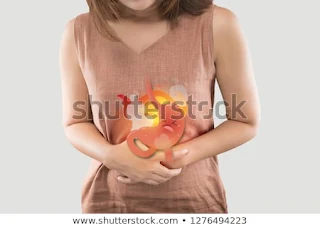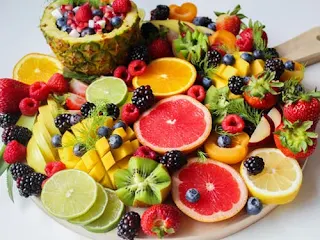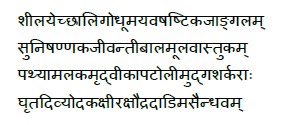Diarrhea or “Atisaar”
Excess of
liquid state body components (“Kapha”, “Ras”, “Pitta”, “Med”, “Rakt”, “Swed”,
“Mutra”) comes out of body with stool due to low digestive fire is defined as diarrhea in ayurveda.
Causes
of diarrhoea
·
Low
digestive enzymes
·
Consumption
of parasite infected food or water
·
Excess
of liquid secretion from the tissues of intestine
Types
of diarrhoea
1. “Vataj” or “Vaat” imbalance: In this type of diarrhea patient’s
stops urinating or urinates very little. There comes a grumbling sound from
stomach. His/her anus either remains still or pops out a bit. Similarly his
waist, joints and thigh also gets still. Patient’s feces is foamy, dry, blackish
in colour and less in quantity accompanied with gas.
2. “Pitaj” or “Pitta” imbalance: In this type the feces contains
foul smell, is hot, gushes out, and is scattered. Feces contains very sharp
yellow, bluish or reddish colour. Patient feels thirsty, unconsciousness, heat
and could have fever.
3. “Kaphaj” or “Kapha” imbalance:
Patient feels very lazy, sleepy, nausea and stillness. Even after stool
discharge, patient is doubtful of doing it again. Colour of faeces can be white
or lighter than usual(Never Reddish) and there isn’t any sound while discharge.
Patient gets Goosebumps while evacuating. Discharge can be mixed with mucus. Patient
doesn’t feel like having food.
4. “Sannipatik” or combination of above
three: Patient feels
laziness and unconsciousness, stillness and dry mouth. Colour of feces can
keep changing. This is also mentioned as incurable among children and elderly.
5. “Shokaj” or due to sorrow: Due to heartbreaking events of property loss
or loss of dear ones, the patient keeps worried and depressed and stops eating
well. This ceases the digestive fire and pollutes the blood. This polluted
blood comes out mixed with feces with pain during discharge. This can treated
but with difficulty because of psychological part.
6. “Aamaj” or presence of “Aam”: In this type the food does not get
digested before reaching the intestines and turns into toxic (Aam) and
causes diarrhea. Undigested food can be seen in the feces as well. Feces
will be smooth and sticky. It is painful, of different colours and too
frequent.
Cure:
· Usually all types of diarrhea have “Aam”
in the beginning. If the trouble is too much which means, if too much of “Aam”
is present in the stomach then fasting is recommended in the beginning to
digest the “Aam” present and stool discharge should not be stopped. Then
the patients should be given quarter amount of his usual rice meal cooked in digestive
medicinal water. Digestive Medicinal water: Boil Pipali(Long pepper), Chitrak(Plumbago
zeylanica), Mahanimba(Chinaberry) and medicines of same category in
water till half of the water is left, then the rice has to be cooked in it and
given to patient.
Water prepared with Harad (Terminalia chebula) , Daru
Haldi (Berberis aristata), Kutaj Beej(Wrightia
antidysenterica) should be given to patient every morning in case the “Aam”
or the toxin in the stomach doesn’t clears.
There is a huge list of medicines but the methods above can
cure “Amaj” diarrhoea completely.
· When the nature of diarrhoea is
determined as “Vaataj” or “Kaphaj” then firstly the “Amaj”
treatment has to be done. If the patients keeps discharging small amount of
feces then 1 gm of “Yavaschaar” and 1gm of “Panchlavan” should
be mixed with 22.6 grams of clarified butter and consumed.
(Yavaschaar: Here barley plant is dried, burnt in open air; ash is added
with water, left over night. Sedimented portion is discarded and decanted clear
liquid is filtered many times. After getting a clear liquid, it is heated and
the solid powder which is leftover at the bottom of the vessel is called as Yavakshara.
Panchlavan: Equal amount of “Rock Salt”, “Black Salt”, “Salt obtained from
volcanic areas (ALCL3)”, “Lake Salt(Sambar)” and unprocessed “Sea Salt”.)
Alternatively , clarified butter proven in milk, dried ginger, Creeping
woodsorrel, Indian jujube and curd should be consumed.
· For “Pitaj” diarrhea cure;
herbs of hot potency are prohibited. “Bala”Sida Cordifolia, “Atibala”
Abutilon indicum, “Shalparni” demodium gangeticum, “Gokhru”
Caltrops, “Kantkaari” Solanum virginianum and “Shatavar” Asparagus racemosus should be taken in
equal quantities. One part of the mixture should be boiled in 64 part of water
till 1/4th is left. Then water should be filtered out. This water is
“Kwath”. One fourth of the usual rice meal should be cooked in this
water and given to the patient.
· For “Sannipataj” diarrhoea, Daru
Haldi (Berberis aristata), Flesh of unripen Bel(Bael Fruit), Pipali(Long
Pepper), Munakka(Sultana currant),Kutki(Picrorhiza kurroa) and Indrayav(Hollarhena
Antidysentrica) should be taken 4 parts, clarified butter 16 parts and water 64
parts. All should be cooked till water evaporates. The remaining should be
consumed to treat diarrhea.
· “Shokaj” diarrhea has the
same treatment as “Vataj”.
<script async src="https://pagead2.googlesyndication.com/pagead/js/adsbygoogle.js?client=ca-pub-7204440794189180"
crossorigin="anonymous"></script>
























